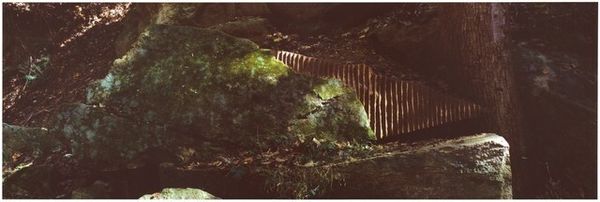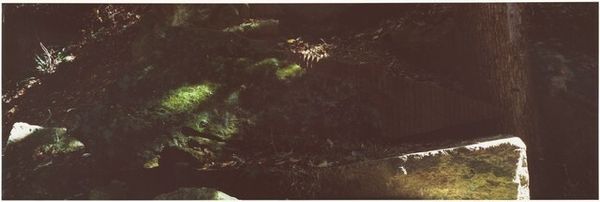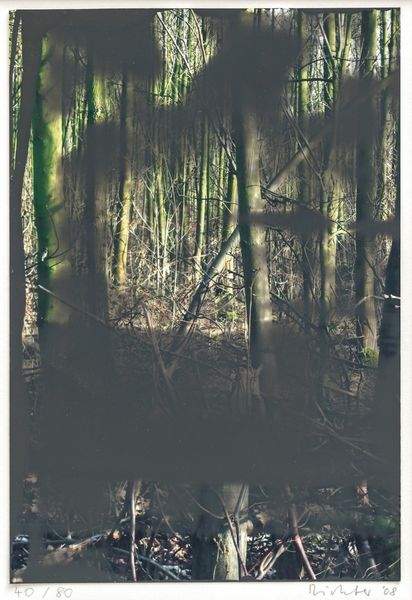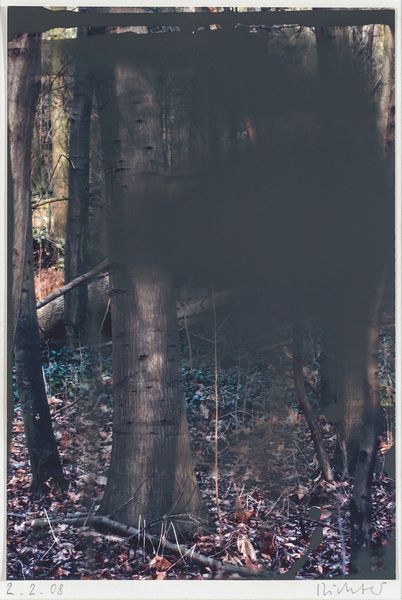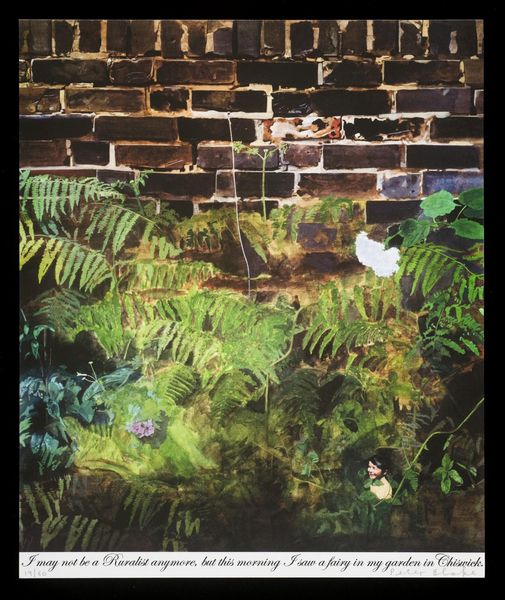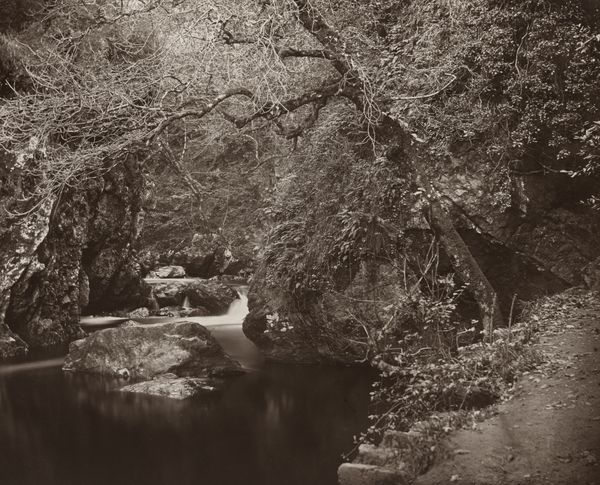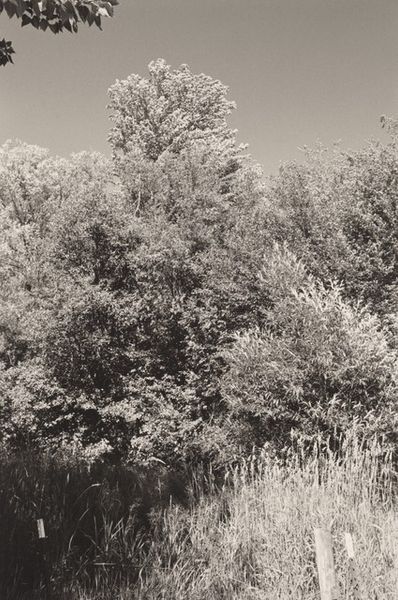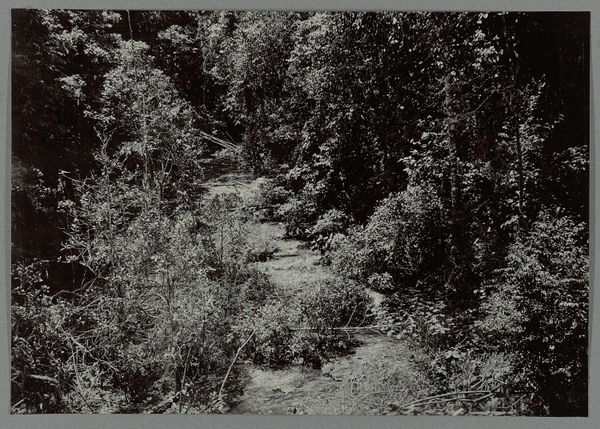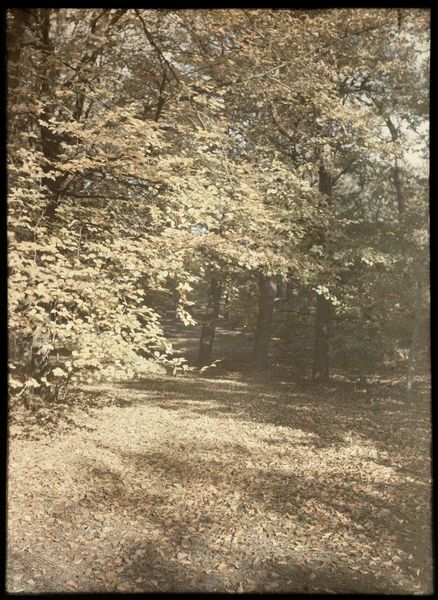
Clay/ Worked into a Stone/ Edges to Catch the Passing Light/ Government Island, Virginia 16 - 2003
0:00
0:00
#
organic
#
natural world styling
#
natural formation
#
organic shape
#
organic movement
#
nature
#
botanical photography
#
abstract nature shot
#
organic texture
#
foraging
Dimensions: image: 42.55 x 127.64 cm (16 3/4 x 50 1/4 in.) sheet: 48.26 x 149.86 cm (19 x 59 in.)
Copyright: National Gallery of Art: CC0 1.0
Curator: This is Andy Goldsworthy's "Clay/ Worked into a Stone/ Edges to Catch the Passing Light/ Government Island, Virginia" created in 2003. A lengthy title for a captivating manipulation of the natural world. Editor: Captivating, yes. My initial impression is one of shadowed drama. The stark contrast between the illuminated rock face and the surrounding darkness is striking. It's an interplay of textures too - rough stone, smooth clay, the subtle greens of moss. Curator: Precisely. Goldsworthy is known for his interventions in nature. He uses only what the landscape provides, making work about process and ephemerality. In this piece, observe how the clay has been worked to accent a pre-existing geological formation. It highlights the edges, as the title says, but it also suggests the molding power inherent in natural forces over immense time scales. Editor: I notice the vertical scoring on the clay. It reminds me of corduroy, almost industrial against the organic backdrop. It makes me wonder, does it suggest an artificial intrusion into nature or some sort of human touch or influence? Curator: Perhaps. Think about the implications of 'Government Island.' Land is always governed, controlled, impacted by societal structures. Goldsworthy, here, engages in his own governance by restructuring the terrain, while hinting at these broader dynamics. It challenges any idyllic view of 'nature' by overtly displaying the labor, both artistic and otherwise, invested in its shaping. Editor: I agree that the location is key. But visually, it creates a captivating geometric tension. That clay facade feels like an insertion, disrupting the natural lines of the rock while conforming to them. It provokes an almost visceral tension in its construction. What do you think about the scale? Curator: Scale is paramount. It isn't microscopic. Goldsworthy intends interaction. This isn't just about observing natural forms, but engaging with them, reflecting upon our position within an environment already charged with meaning. It forces us to ponder our impact, even when seemingly minor. Editor: I find I keep returning to that tension—that subtle drama between form and shadow, the natural and constructed elements. It provokes a reflection on how we define these boundaries and their interactions. Curator: I see it similarly: this tension serves to bring to light a dialogue that has occurred over eons and continues through human interaction, captured within this fleeting intervention.
Comments
No comments
Be the first to comment and join the conversation on the ultimate creative platform.
